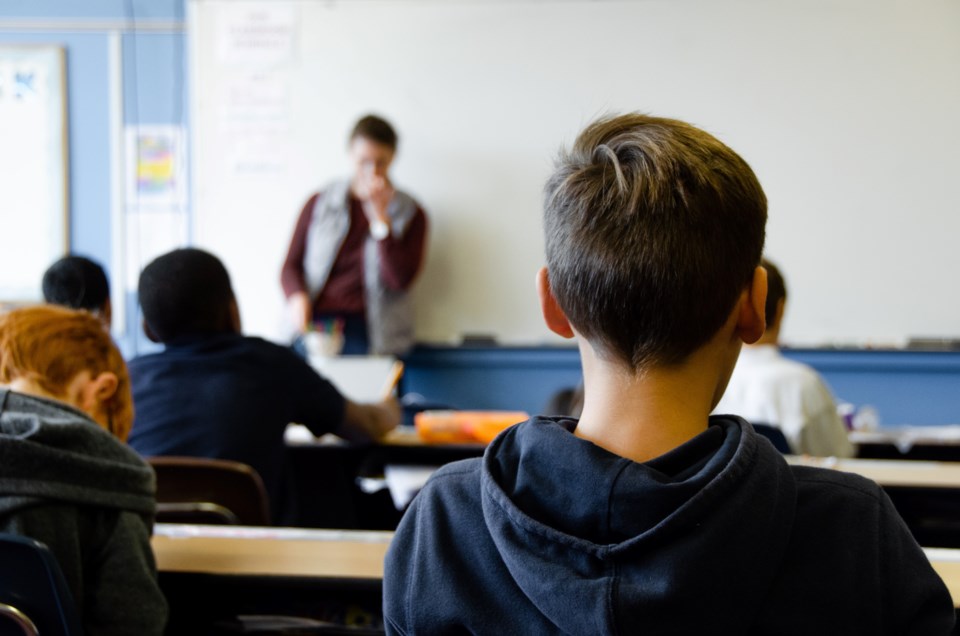Colorado public health officials have revised their quarantine guidance for schools in ways that would send fewer children home and allow them to return to school more quickly — in situations where cold- or flu-like symptoms are unlikely to be COVID-19.
State public health officials said the new guidance, issued Wednesday, was developed through feedback from school district officials, teachers, school nurses, local public agencies, and clinicians. They said it was both more detailed and more nuanced than the original guidance issued July 30. While it’s ultimately not binding, they hope it provides some consistency across the state.
Colorado Education Commissioner Katy Anthes told the State Board of Education that many superintendents raised concerns about the “challenges” of the original quarantine guidance, and the new guidance should be “more feasible” to implement.
“I can’t say it’s going to be easy because if there is a presumed case, superintendents will still have to take action,” she said.
If students or staff members have a positive test result or have major symptoms with a known exposure to someone with COVID, schools would still have to send home entire classrooms or cohorts of students. When there is evidence of broader spread, entire schools might have to close. That hasn’t changed.
But in cases where students or staff have mild symptoms that resolve within 24 hours and community transmission is low, the new guidance lays out ways to keep students in school. It also allows students and staff to return to school if they have a negative COVID test after being exposed.
“I don’t want people to think this is a looser version or that we’re relaxing safety standards,” said Dr. Alexis Burakoff, a medical epidemiologist with the Colorado Department of Public Health and Environment’s Communicable Disease Branch. “In certain circumstances, risk is very different: when someone has cold symptoms and has no known contact [with a positive case] and hasn’t traveled outside a community with low transmission, versus someone who has very concerning symptoms in a community with high transmission.
“This guidance has more complexity, but we do not believe we have sacrificed safety.”
The Colorado school districts that have opted for an extended remote start have pointed to relatively high rates of community transmission in making their decisions. Frequent quarantines would mean students lose out on much of the benefit of being in school in the first place, while facing increased risk of exposure. But other school districts facing the same public health conditions have opted for in-person learning, even as teachers attending planning sessions have tested positive and had to quarantine along with colleagues.
In rural parts of the state, most school districts are planning to hold in-person classes.
Public health officials said they tried to balance the benefits to students and families of being in school with the need to limit the spread of COVID everywhere.
“There was a lot of concern from partners about the importance of having kids in school and what that means for families and parents needing to work,” said Nicole Comstock, deputy chief of the state health department’s communicable disease branch. “Our focus in public health is on safety and that extends to families.”
But Comstock and Burakoff emphasized that the goal of new guidance isn’t necessarily to reduce time spent out of school.
“There will be times when it isn’t safe to be in school,” Burakoff said.
The new guidance has different protocols for communities with high and low rates of community transmission of the coronavirus, but leaves open how low transmission would be defined. Counties that meet the criteria to move to “Protect Our Neighbors,” the most relaxed of Colorado’s three pandemic phases, would be considered to have low transmission, but so far, no county has that designation. Nonetheless, some local public health agencies, particularly in rural areas, consider their counties lower risk using a variety of their own metrics.
The guidance includes a “stay-at-home” checklist for parents. In areas with high transmission, any cold-like symptoms, such as runny nose or headache, would be reason to keep a student home. In areas with low transmission, those students could go to school but should still stay home if they have what are considered “major symptoms”: fever, persistent cough, loss of taste or smell, difficulty breathing, or shortness of breath.
Whether transmission is high or low, a positive COVID test results, the onset of symptoms in someone who knows they’ve been around someone with COVID, or the presence of a fever and another major symptom would trigger an immediate quarantine for that student or staff member. Classmates and colleagues who had close contact would be sent home but could return if they have a negative COVID test.
Schools can choose to monitor the situation for up to three days before making a quarantine decision in cases where students and staff have just one or two minor symptoms and no known exposure to anyone with COVID. And in areas with low transmission, they can continue holding classes in person.
Editor's note: This story was originally published by Chalkbeat and was shared via AP StoryShare.

